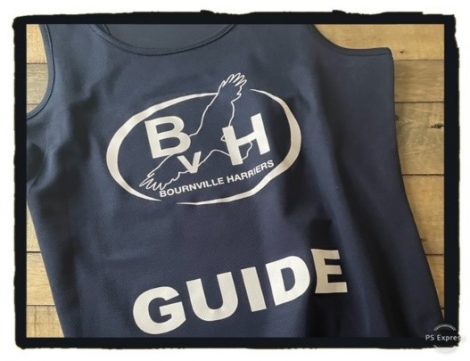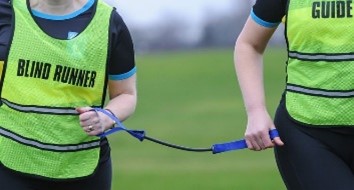
Like many of us across the firm I’m eagerly getting out and about to clock up miles for the Marathon in a Month challenge at the moment. I’ll be doing some of those miles as a VI Guide and, as I’m sure everyone agrees, there is no such thing as too much running talk, so when a colleague suggested I share a few words about the experience I agreed straightaway.
I’ve been running as a Guide for a few years, mainly running with my friend, Kelvin. Kelvin has very limited sight – he only sees things immediately in front of him and can’t see anything below chest height – so running alone is not an option for him.
There are many things I love about running – it enables me to connect with the outdoors while disconnecting from technology (and young children!) and it’s great for letting the mind wander. There have been many times where I’ve thought through solutions to knotty client issues while plodding up and down the canal towpaths of south Birmingham! It can also bring a huge sense of achievement.
One of the great things about guide running is knowing that I’m making it possible for someone else to enjoy all the benefits it brings as well as achieving their own goals.
I often run with groups of friends and guide running with Kelvin is pretty much like any of those other runs. We put the world to rights and chat about our running goals and training plans. When we went into lockdown Kelvin was preparing to take on the Two Oceans – a 35 mile coast to coast ultra in Cape Town – and I really enjoyed hearing all about his plans.

But, it’s also different to other runs because, while we’re running, I tell him about any obstacles in our path, give him directions and try very hard to get my left and right the correct way round. We run with a tether like the one pictured. It took us a few loops around the local park to get used to running together and for me to understand what instructions Kelvin needed. We’ve covered many miles since.
Guide running has really made me aware of how narrow our pavements are and how many obstacles exist for individuals with visual impairment. From cars parked on the pavement to bollards, signage, bus stops, uneven paving, utility repair works, blocked crossings, zigzagging dogs, you name it… we encounter it at least once on every run. We now know better than to attempt a local run on bin collection day!
Although guide running requires a different level of focus compared to running alone, it is really rewarding knowing that I’m supporting someone to access and enjoy running as much as I do and I’ve learned a lot through the experience.
There’s a high demand for guide runners and one of the things Kelvin has found is the bigger the group he can call on, the better, as busy and clashing schedules can scupper the best laid training plans.
If anyone is interested in learning more or giving it a go the best way to get involved is to join a workshop with England Athletics and British Blind Sport. And don’t be put off, there are VI runners at every level so you don’t need to be running ultramarathons to give it a go. Last year I did a couch to 5k course as a guide for a beginner – assisting her to run the 5k in her target time, felt as good as any parkrun PB!
And talking of parkrun, you can also volunteer as a guide through parkrun’s own programme. Contact the local event team who will match you up with a VI runner through your local event (more info here). Best of all – guide running earns both a volunteer credit and a running credit toward a coveted milestone t-shirt. Just don’t forget your barcode!
